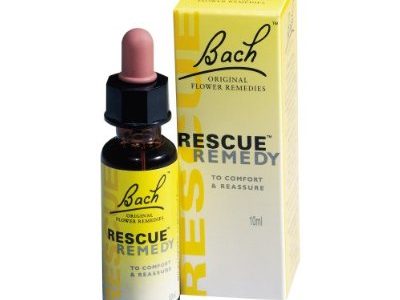 If your life feels like a house of cards on the verge of collapse– if you have to miss a day of work, or worse, if you lose your job– keep faith, there is help available to you. Single parents face tremendous pressure; often we are sole providers for our kids and ourselves. The responsibility lies with us, and it can be terrifying. The good news is, we’ve got some resources that you can access to help to keep you strong when the winds of change blow. Moreover, qualifying for one category of need might allow you to receive other benefits.
If your life feels like a house of cards on the verge of collapse– if you have to miss a day of work, or worse, if you lose your job– keep faith, there is help available to you. Single parents face tremendous pressure; often we are sole providers for our kids and ourselves. The responsibility lies with us, and it can be terrifying. The good news is, we’ve got some resources that you can access to help to keep you strong when the winds of change blow. Moreover, qualifying for one category of need might allow you to receive other benefits.
Housing
I moved to another state when my son was a toddler. I was escaping a domestic battery situation. Having done my research first, I knew which programs to look into when the money ran out. That’s where the learning process began. I looked into shelters and subsidized housing. The humiliation was horrible, but the bright side was that it could only get better from there.
Here is what I learned from my experience:
Naturally, there is usually a waiting list for subsidized housing. If you are living in a temporary shelter when you apply,you will automatically move to the top of the waiting list. On the other hand, if you have friends and family who are willing to lend a hand (and a couch) in your time of crisis, and you use their address on your application, you will not meet the criteria for homelessness, and thus won’t jump to the top of the list. However, if you can provide a note saying that your reprieve is temporary, you will be placed in the subsequent category. In other words, while staying with a friend may be more comfortable, and ultimately more desirable, it may slow your progression through (and ultimately out of) the system.
One of the biggest problems that people with housing issues face is that you have to have a physical address in order to be considered for any type of assistance. It’s a major glitch in the system because if you had a physical address, you wouldn’t be in such dire need.
As you begin to build your life from the ground up, you can find help from various community based organizations and religious groups. A good list of resources can be found at www.needhelppayingbills.com/. If you are in need, you deserve the help that is out there for you.
SNAP and TANF
One of the first places you will want to go is the Office of Family Assistance, a branch of the US Department of Health and Human Services, where you can apply for SNAP (Supplemental Nutrition Assistance Program) and TANF (Temporary Assistance for Needy Families).
If you aren’t getting child support, you may qualify for Temporary Assistance for Needy Families (TANF). Keep in mind that this money replaces your child support, so when you do start receiving support, the state is going to want to be reimbursed. Although it is not strictly considered a loan, the TANF funds are temporary and are to be used until your child support starts coming in. Once child support is being paid, the state will garnish your support checks until the TANF funds you have used are replaced. The only exception is if your TANF funds exceed the amount of your child support, in which case, the state will simply absorb your child support and give you the larger TANF funds instead .
If you aren’t getting child support because it hasn’t gone through the courts yet, the state will bring the absent parent into court to settle the matter, and will determine how much responsibility each parent must take on when it comes to raising a child.
Each state has its own formula to determine how much child support a person will get. The formula combines the income of each parent and then determines how much it will take to raise the child based on what’s available. For example, if you make $200 a week, and the absent parent makes $800 a week the state might say that it takes $200 a week to raise a child and initially, you are responsible for 20% or $40 of that amount, while the absent parent is responsible for 80% or $160. However, the state then starts giving each parent deductions based on the amount of days each month that he or she has the child, who provides insurance, who pays for daycare, and other costs. As a custodial parent, you will have more deductions simply because you have more custody. The absent parent will get deductions for the days he or she has visitation. Whoever carries the insurance will get deductions for that as well.
If you qualify for TANF, the government considers you officially in need, so you automatically qualify for other government benefits, such as SNAP and Medicaid.
Benefiting from TANF– Higher Education
Should you want to go back to school to finish a degree, there are government programs with funding available. First, fill out the Financial Application for Student Aid (FAFSA), which will calculate how much of the tuition you are responsible for paying. Because it has already been proven that you are at or below the poverty line, you will likely qualify for 100% coverage – which means, you might not have to pay anything at all.
You may be eligible for federal and state grants, as well as scholarships – which means no student loan debt. To qualify for all aid possible, go to the FAFSA website and fill out the application in accordance with the deadlines of your state, and your college. It’s best to fill out the applications at the end of January, when you have all your tax information, but even if you don’t have it, you can still submit the FAFSA and update the tax information later.
The funds from these grants go to directly to the school to pay off your tuition and other fees. The balance is then sent to you to cover living expenses. In addition to government subsidies, there are other scholarships available for single parents, and if need be, you can also take on a student loan. Student loans don’t require a credit score, so they are easy to obtain, but consider all other possibilities first, as you will be required to start paying back these loans as soon as you graduate.
This type of government assistance is how it became possible for me to go from being in a battered women’s shelter to accepting my M. Ed. – and paying off my house – within a matter of years.
Child Care
One of the biggest struggles we face as single parents is finding someone we can trust to look after our children – and being able to pay them. With the today’s minimum wage being so low, childcare fees sometimes exceed what we actually take home in pay. Being on TANF can help.
States have a child care voucher program that helps parents pay for child care not just while they work, but also while they job-hunt. Certified or licensed child care providers accept funds from the state, though some may charge a small fee to cover additional costs. You have to apply for this program when you are on TANF, and there is usually a waiting list. However, many people drop off the list because they lose TANF, or simply get tired of waiting. Apply for this program at the same time as you apply for TANF, and you’ll get on the list faster.
There Is a Safety Net
It’s a myth to think that there is no help out there for people struggling to make ends meet. Ingenuity, patience and persistence can help even the playing field as you strive to build a better life for yourself and your children.






